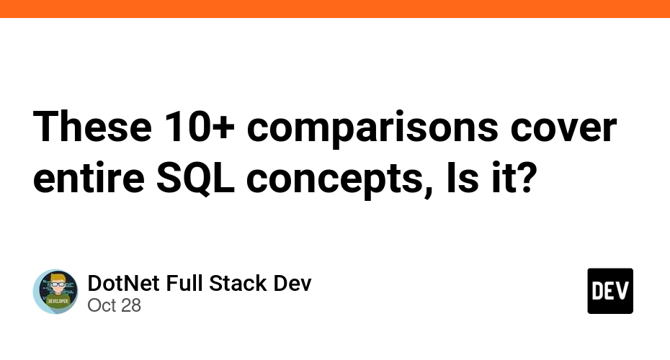Dev
1M
192

Image Credit: Dev
These 10+ comparisons cover entire SQL concepts, Is it?
- The article highlights some important SQL concepts and key terminologies that are frequently misunderstood or confusing.
- 10+ comparisons are made in a tabular form in the article to clarify the differences between these concepts.
- The primary key uniquely identifies every record in a table and can not contain null values, while a foreign key is used to link two tables together.
- Clustered Index stores data rows in the table based on key values, while non-clustered index stores a separate structure from data rows with pointers back to the data rows.
- Inner join returns matching value rows in both tables, while outer join returns all records when there is a match in either left, right or both tables.
- Where filters records before any groupings are made in the result set,
- Having filters records after the group by clause is applied.
- Union combines the result sets of two queries and removes duplicate records, whereas union all combines the result sets of two queries but doesn't remove duplicates.
- Delete removes rows one at a time and logs each row deletion, while truncate removes all rows from a table without logging individual row deletions.
- Drop removes a table entirely, while delete removes rows based on the condition but keeps table structure intact.
- Char is a fixed-length data type that always occupies fixed storage space, while varchar is a variable-length data type that occupies space based on the actual length of the data.
Read Full Article
11 Likes
For uninterrupted reading, download the app